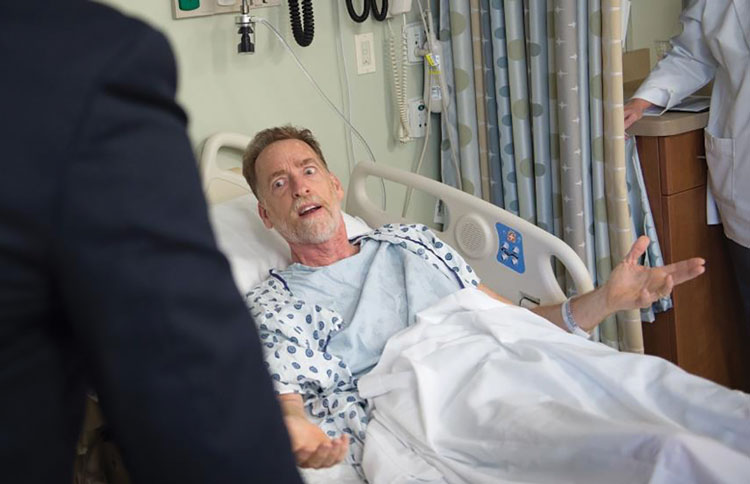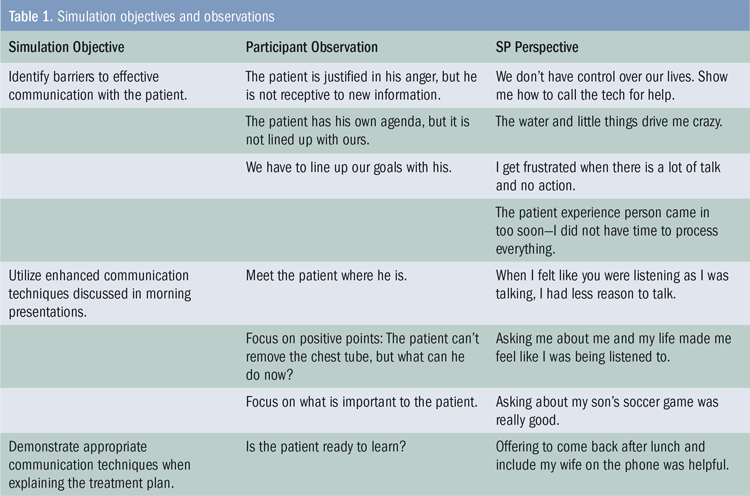Fundamentally Human: Learning By Design

Immediately following the simulation, the facilitator debriefed the entire team and discussed the objectives. Selected perspectives of the teams and the SPs are included below (see Table 1).
Following the simulations, symposium participants listened to the experiences of the SPs via a panel discussion format. While discussing the simulation scenario, one of the SPs shared: “When I was briefed about the scenario and had time to think about it, I realized how angry I would be.’’ As the simulation progressed, one SP noted, “If that situation had really happened to me, and you had approached me the way you did, it would not have been helpful; it would have made me even angrier. However, sometimes I would feel diffused when they replied with some type of evidence that they heard me.”
As the panel shared its feedback about the simulation, it was clear that no single communication approach will work for every patient. Being situationally aware and attuned to the patient’s needs is paramount to effective communication. For example, while some SPs appreciated when the provider slowed down and repeated information, other SPs found it frustrating, “like I’m old and slow.” Using medical jargon was perceived as a way to “talk down and diminish the patient’s intellect.” One SP explained that personal acknowledgment was important to them, “perhaps even touching my arm.” Participants listened closely as the panel of SPs shared their diverse experiences and expectations.
Outcomes 2016
Positive evaluations indicated the challenge to incorporate patient experience and SP feedback into a simulation with clear objectives for a wide range of attendees was met. Most attendees felt the simulation objectives and attendee roles were clearly explained, but some commented on feeling the simulation was designed more for a physician interaction than for anyone else. Several comments noted the effectiveness of the simulation to increase awareness of communication with patients and the importance of truly listening to what the patient is saying, as well as verifying understanding of what was explained. Many attendees also noted increased awareness of the need for more simulation around patient communication to continue improving care and outcomes.

